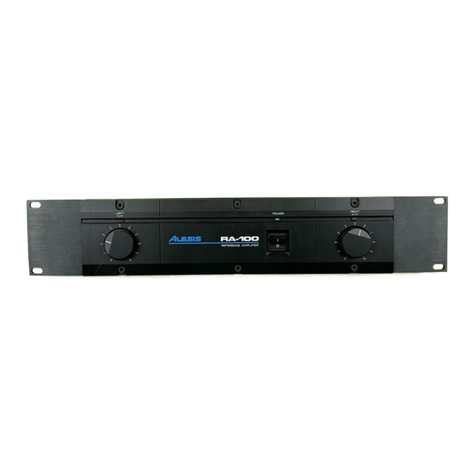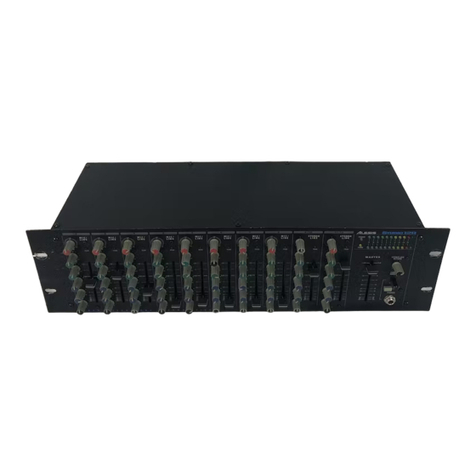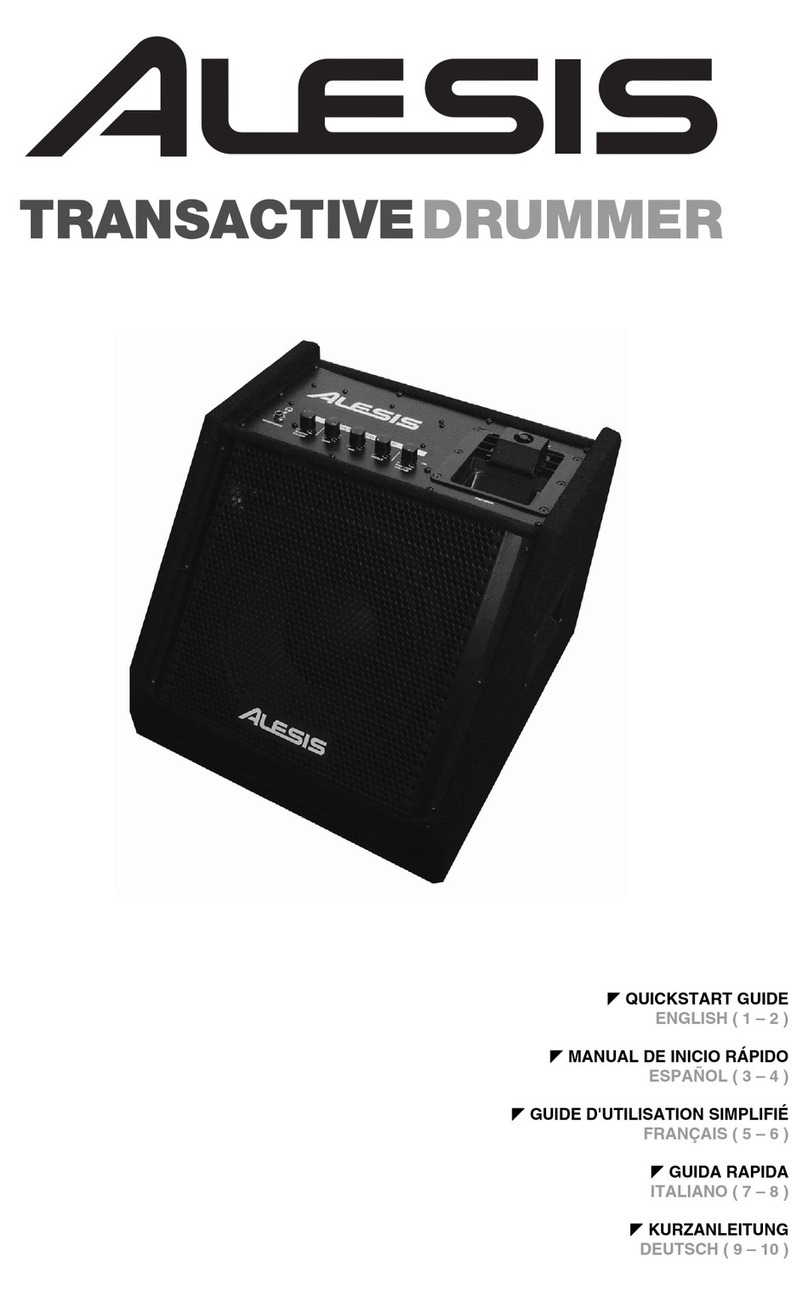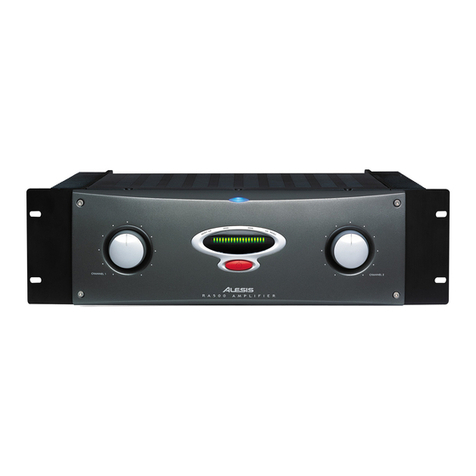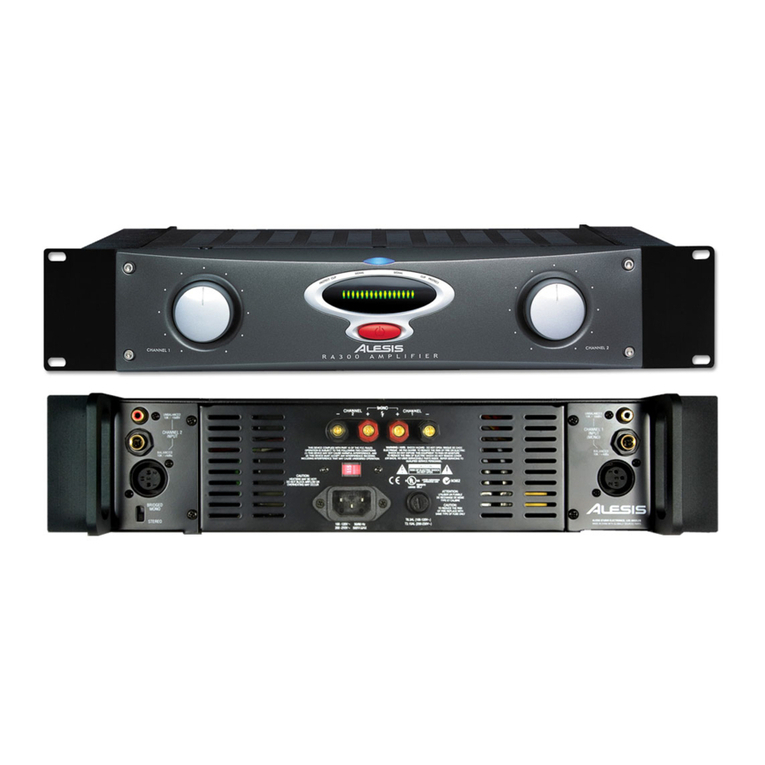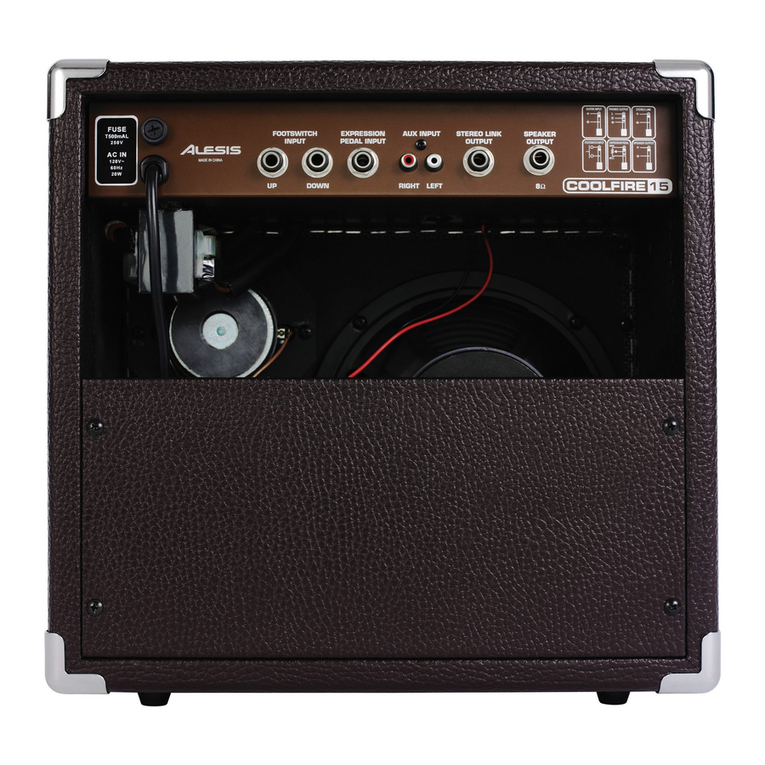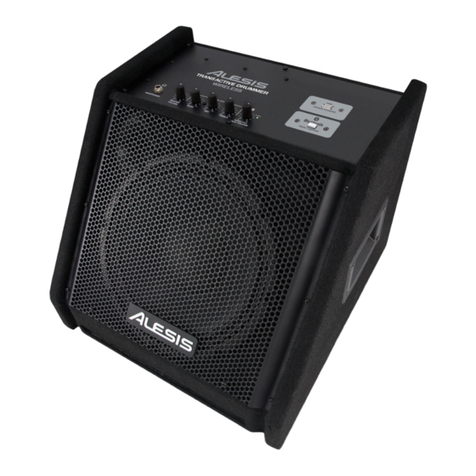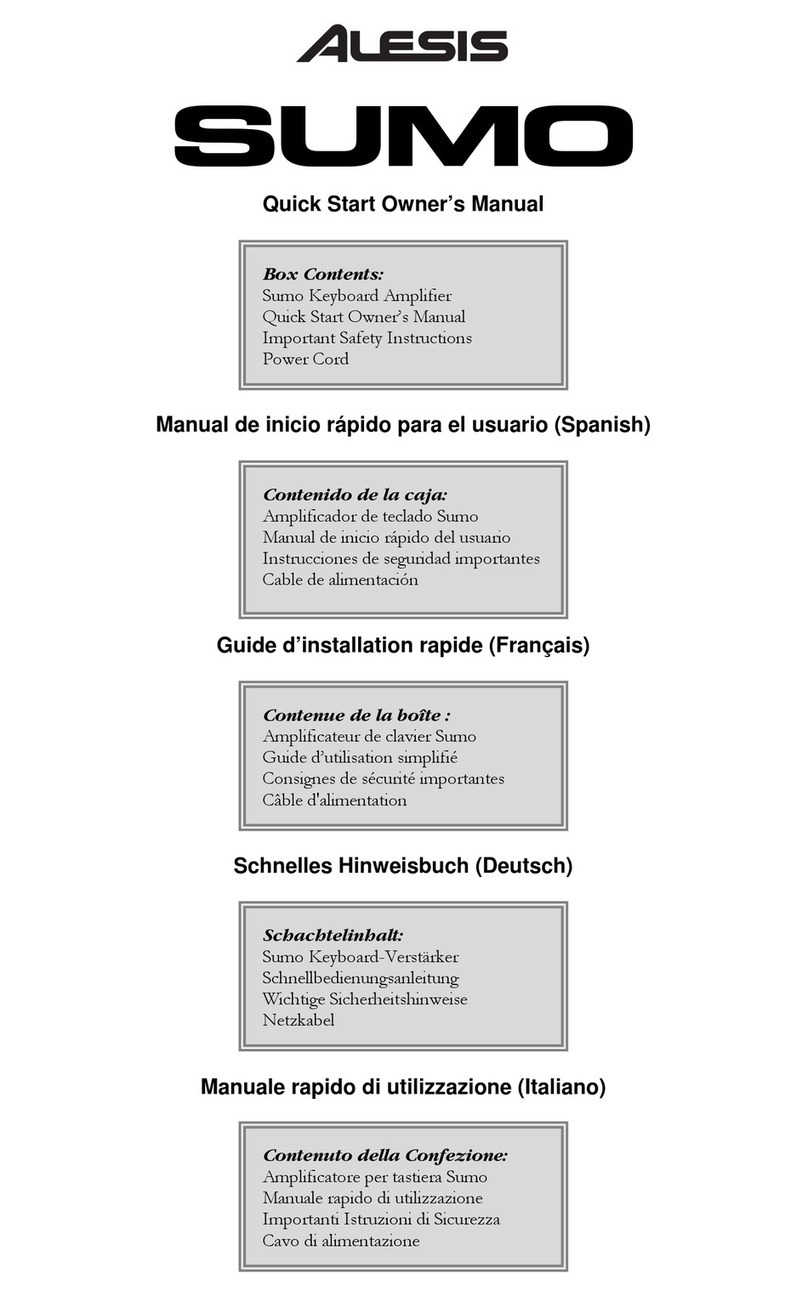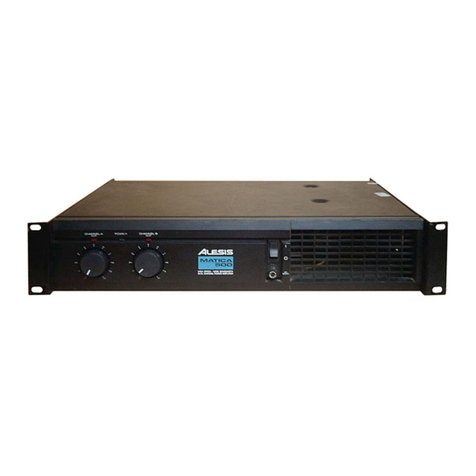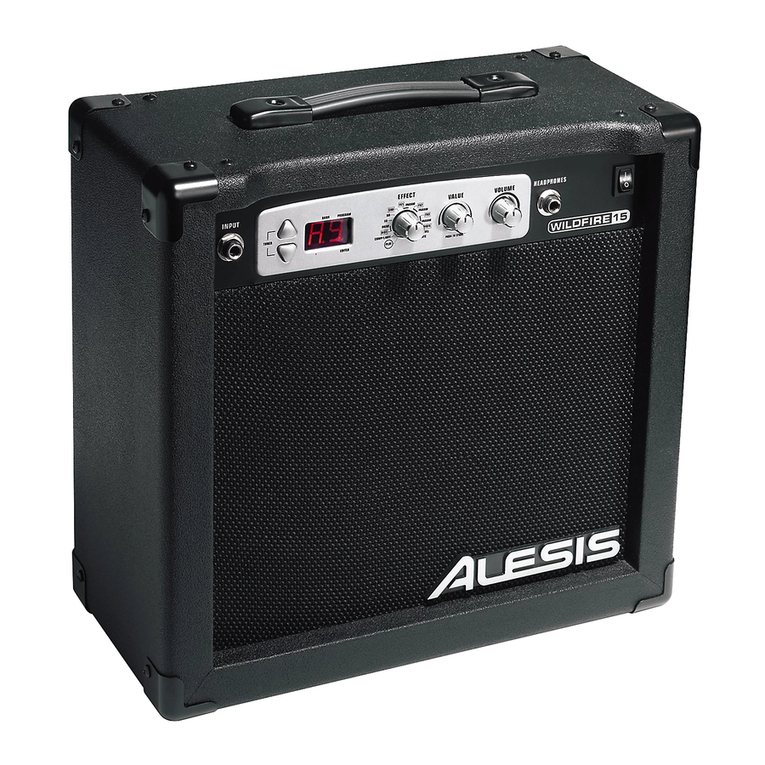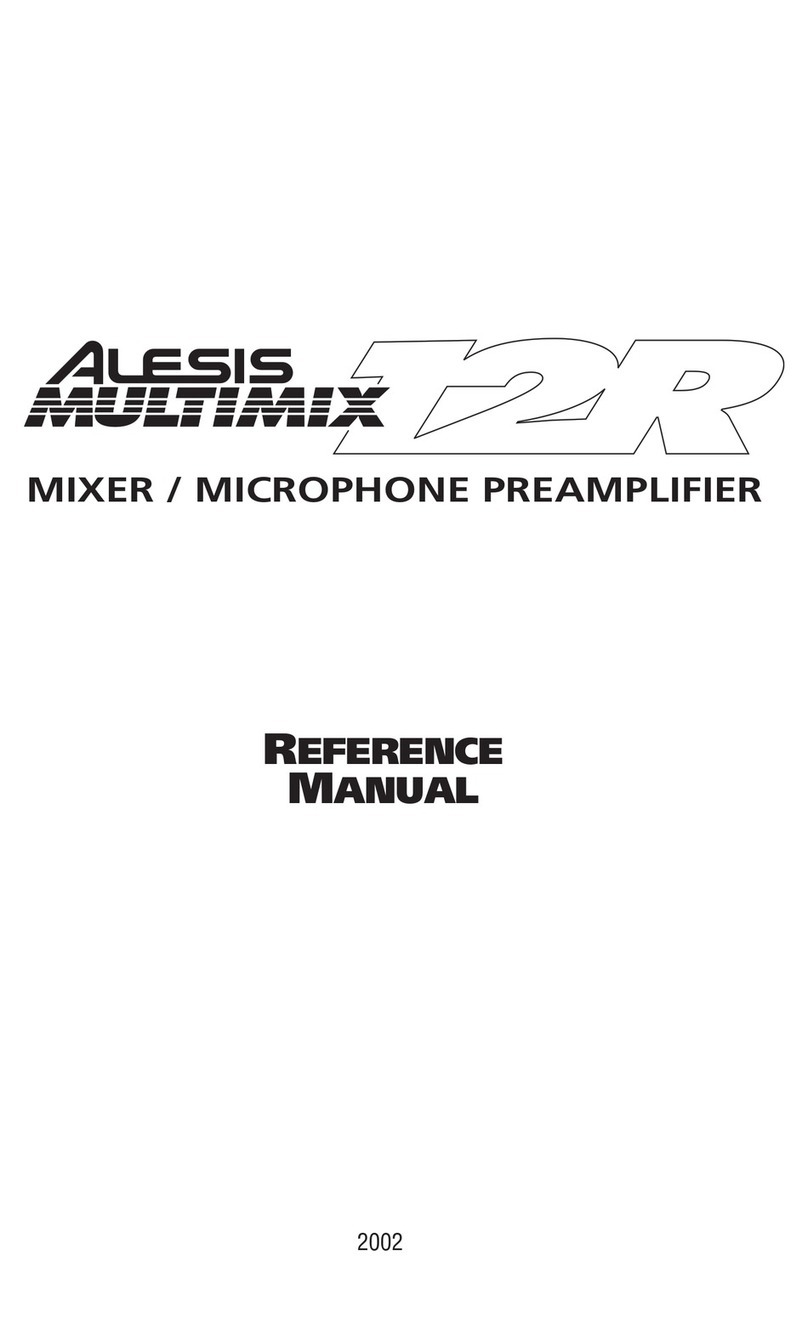
•No “speaker stress” during shutdown. With traditional protection circuitry,
the act of clamping the output devices to a safe value can make the amp
unstable with particular notes that interact with the speaker resonance,
thus producing oscillation or “motorboating.” This could damage your
speakers. The RA-100 uses an elegant clamping design that observes the
load at all times but also integrates the signal characteristics into the
clamping action. Thus, the clamping action is gentle and, after clamping to
the maximum current encountered in normal operation, will slowly (over
1 to 2 seconds) clamp based on the load and signal characteristics. If the
source of the problem (e.g., a short across the speaker terminals) is
removed, the signal recovers instantly.
•Alesis also recognizes that whatever else, “the show must go on.” As a
result, under conditions of extreme abuse (such as ultra-low speaker
impedances or mounting that allows for no ventilation), the RA-100 will
limit its signal rather than simply shut down. Taken to an extreme, this
will produce distortion but sound will still come out.
To acquaint yourself with the RA-100’s operation, and to use it properly in
various applications, carefully read this manual. Power amplifiers are high-
current devices that are the next-to-last link in the audio chain. Proper
attention to cabling, power distribution, ground loops, and other topics
covered in this manual is vital to have the RA-100 live up to its full
potential.
As always, we welcome your suggestions and comments concerning this
product, or any other product in the Alesis line.
Unpacking and Inspection
Your new Alesis power amplifier was carefully packed at the factory, and the
container was designed to protect the unit during shipping. Please retain this
container in the highly unlikely event that you need to return the RA-100 for
servicing.
Upon receiving the RA-100, carefully examine the shipping carton and its
contents for any sign of physical damage that many have occurred in transit.
If you detect any damage, do not destroy any of the packing material or the
carton, and immediately notify the carrier of a possible claim for damage.
Damage claims must be made by you. If you picked up your amplifier directly
from an Alesis dealer, contact the dealer.
The shipping carton should contain:
•This instruction manual
3


